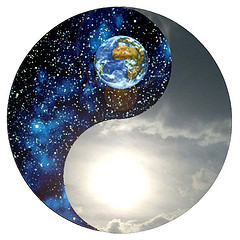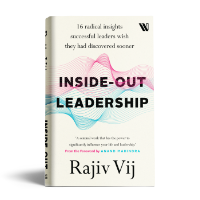
Photo by Ray MacLean
Death is not a subject we often think about or are even comfortable talking about. In fact, a number of contemporary sociologists believe that despite widespread liberalization of thought in modern times, death is one of the topics where the extent of taboo has actually grown. What is death?
An important law of physics, the law of conservation of energy, states that the total amount of energy in a closed, or isolated, system remains constant over time. What this means is that in such a system, energy cannot be created or destroyed. It can however change forms. We also know from Einstein’s theory of relativity that mass and energy are one and the same thing. Thus, we can infer that in a closed system, the total mass and energy of the system stay unchanged over time.
Given that the universe is such a closed system, it is understandable that there is no new energy or mass being created inside it; there’s instead a shuffling and metamorphosis of forms that’s happening constantly. Take the example of a snowflake, an ice cube, a water droplet and a steam vapor. What do you notice is common in here? All these are nothing but different expressions of the same entity. While the underlying essence of each of these forms is water, we attach different labels to each of the forms and, in the process, get distracted from connecting with the truth.
This is what explains death. The universe is constantly evolving and, in the process, continues to take different forms– galaxies, stars, planets, animals, plants and humans. All the forms arise from the universe and dissolve into it, but are neither born nor die. Death is a concept of the mind and of its identification with the body form.
Consider the life cycle of a butterfly. It starts with an egg that gets fertilized and hatched into a caterpillar; the caterpillar grows in size, sheds its last skin and in its place grows a tough flexible shell; and from this shell emerges a fully developed butterfly. In a few days, the butterfly dies and its remains become organic manure for the plants; flowers bloom on the plants; a young butterfly feeds on the nectar and pollen from the flowers, turns it into protein and other nutrients, and lays eggs. And, the cycle continues.
Through all these forms of an egg, the caterpillar, and the butterfly, the only constant is the underlying consciousness. All these forms are impermanent; the only thing eternal is the formless consciousness that just takes different identities from time to time. How else would you describe the transformation of forms in the above example of the egg and the caterpillar? Would you say, the egg died or later, the caterpillar died, even though the egg and the caterpillar physically ceased to be so at some point in time?
It’s another matter that with our conditioned beliefs, we tend to identify rather strongly with our physical form – the body, the mind and the senses. We fail to recognize that the physical form is not solid matter, even though it appears so, but essentially made up of fluid energy – the same energy that runs the universe. This energy is unborn and undying and irrespective of whether we are dead or alive in the human form, we remain this consciousness. As is said, “We are not human beings having a spiritual experience, but spiritual beings having a human experience.”
This awareness guides us into living our life in harmony with nature’s evolution. That’s what brings us true joy and deep inner peace.
(I had recently written this article for The Speaking Tree column of the Times of India)
Related Search Terms:
Human life cycle theory /The cycle of life & living beings/Energy body&physical body











 Life Lessons From My Seventeen-Year-Old!
Life Lessons From My Seventeen-Year-Old! Two Questions Worth Asking Yourself This New Year
Two Questions Worth Asking Yourself This New Year Turning Mid-Life Crisis Into An Opportunity
Turning Mid-Life Crisis Into An Opportunity So, what are you addicted to?
So, what are you addicted to? Personal Mastery and Communities
Personal Mastery and Communities
we all know that entropy of universe is continually increasing…….. or we can say universe is ever expanding……… now can we assume that if entropy increase to that extent that the laws of physics find variation …..or we may say that with every increase in entropy in small time.. there is change in the each and thing universe is made up of…..these change are assumed to be negligible or remain unnoticed by living creatures…..
I will definitely recommend this to my friends
I think that while majority understand the basic philosophy, we tend to get so immersed in our human being form, that the thought of one day not having it is very fearful. And also the understanding that no one has ever been able to do anything about. We also get too attached with our loved ones…and belongings, that the realization that one day we will not have either, is very uncomfortable and frustrating.
Atul Jain, New Delhi
I think that while majority understand the basic philosophy, we tend to get so immersed in our human being form, that the thought of one day not having it is very fearful. And also the understanding that no one has ever been able to do anything about. We also get too attached with our loved ones…and belongings, that the realization that one day we will not have either, is very uncomfortable and frustrating.
Atul Jain, New Delhi
This article reminds me a similar article with title “There is no need to dread death” written by our friend, great Rajiv vij in Sunday times of India, Bangalore dated 21st February, 2010 [Mind over matter]
This scientific explanation clearly once again proves the great Advaita ‘Siddhantha’ of Jagat Guru Sanakaracharya and “Unified theory” of Modern Physics.
Hats off to dear Rajiv. Looking forward to similar articles. Thank you rajiv.